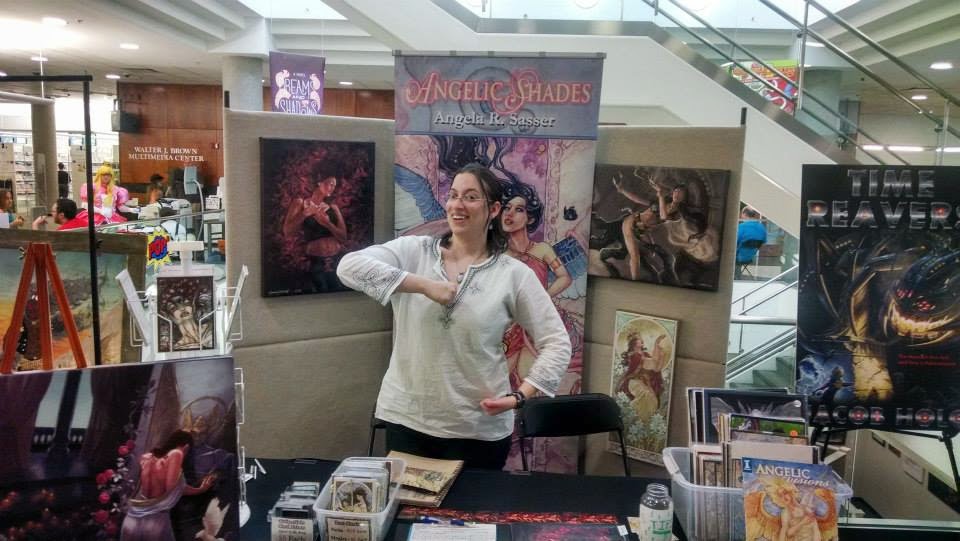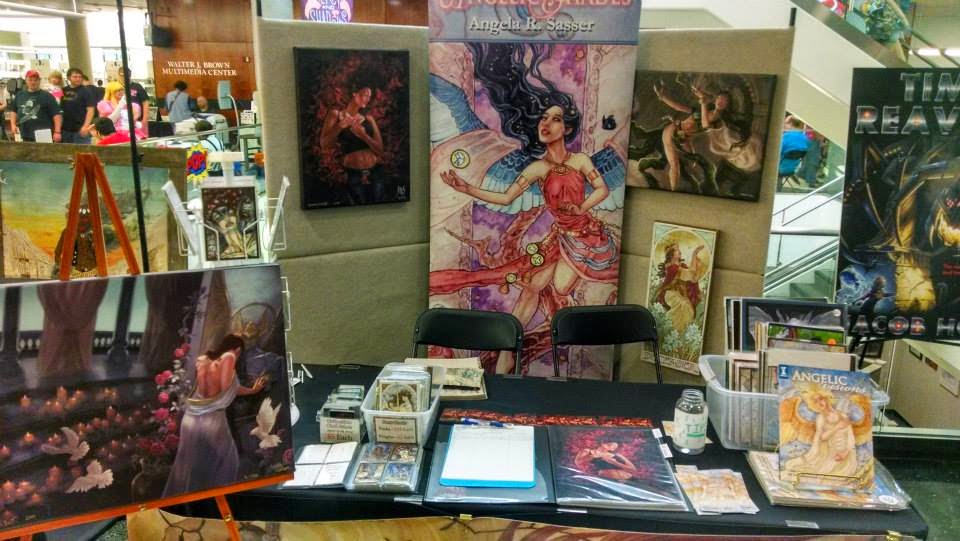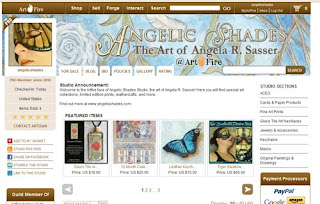 A few months ago, I’d never even heard of Artfire, but had already been a vested user of Etsy since 2008. Now after plenty of fiddling over at Artfire, I feel confident enough to talk about its usefulness for artists.
A few months ago, I’d never even heard of Artfire, but had already been a vested user of Etsy since 2008. Now after plenty of fiddling over at Artfire, I feel confident enough to talk about its usefulness for artists.
What is Artfire?
Like Etsy, Artfire is a community marketplace for handmade and vintage items who offers community forums, item collections, and groups to join. The main difference in philosophy being that Artfire allows you to plug external websites much more in your own listings and pages, unlike Etsy, which discourages such practices. The other difference is of course the fact Etsy is far more entrenched with greater press coverage.
Artfire is catching up, though! If their constant marketing campaigns, helpful articles, and numerous twitter accounts is any indication of how much they’re putting into making their site known. They also offer their members discounts at CHA (Craft and Hobby Association) and VIP discount cards at Joanns Fabrics (10% off regular and sale price items)!
Selling on Artfire
Much like Etsy, artists can post listings of items, sort them into browsing categories, and find buyers for their handicrafts. Where Artfire differs in this respect is that listings have no expiration date. A user must ‘check in’ at Artfire to keep their listings higher up in the search results, which weeds out the people who post listings and leave them there without maintaining them.
– Prints and Fabricated Art Items
Another quirk of AF I’ve found is that if you’re selling art prints, cards, or any other pre-printed open edition item utilizing your art, they have to be a run of 500 or less while Etsy hasn’t set a number, to my knowledge. This isn’t much of a problem for me, however, as I’d be happy to even reach that amount of sales per item! With the number of open edition prints listed on AF, however, I suspect this policy isn’t heavily enforced.
– Seller Invoice System
AF boasts a pretty full featured invoicing system for sellers, including itemized invoices where you can check off each stage of payment, packing, and shipping as it happens with a field to enter an item’s tracking number. This number is automatically emailed to your customer when you enter it, making these invoices pretty handy for taking care of your customer all in one place!
– Feedback and Non-Member Buyers
One big difference between Etsy and AF’s way of handling transactions is the fact that AF also encourages you to do what you need to do to make a sell, meaning customers don’t need to have an AF account to buy! They can simply use AF’s shopping cart feature. This means you don’t get feedback or karma from the transaction, but that doesn’t seem terribly important on this site, despite the fact users can still leave detailed feedback on your shipping, quickness, item quality, etc. Because there’s no final value fee taken out when a sale is made, it’s easy enough to cancel the order and relist with no loss of money, should you have trouble with a non-paying buyer.
– Promotional Coupons
Another extremely useful feature of AF is the ability to create promotional codes. While you can do this on Etsy, Etsy restricts your coupon codes to only a certain percentage off or free shipping. AF’s coupon code functionality is more robust with the ability to tailor your coupons to a percentage off and free shipping, but also allows you to apply coupons to seller-defined studio groups and price ranges, the order total, or even specific items. Coupon codes are also another premium member feature.
– Other Useful Features
If you’re a user of Etsy, AF makes it easy to download your CSV file from Etsy and import all of your items with only a few tweaks required! This is a premium member feature, however. You can also batch edit your listings, move them en masse to new categories, and take advantage of a detailed vacation mode that allows you to leave your items up, but auto-responds with your ‘away’ message. Unlike Etsy, which simply hides your items completely from listings until you disable it. There’s also a ‘sales mode’ that allows you to discount everything in your shop at once. Sales mode and vacation mode are both non-premium features!
Crunching Numbers
Another major difference between Artfire and Etsy is the fee structure. Artfire charges a flat monthly fee (I pay $5.95 thanks to a beta deal I got, but standard pro rate is $9.95 as of this entry) while Etsy charges 20 cents per listing for 3 months and takes 3.5% of your final sale’s value. If you’re hosting a large amount of items, AF can be really useful for keeping costs down each month.
As for sales numbers, I’ve noticed a greater number of handmade craft items and cards selling here rather than my prints and original art, but it’s still great to get the exposure on my artwork along with everything else. I have a feeling that as I grow my shop and become more entrenched in this community, these sales proportions will change!
Customization
One thing I absolutely love about AF is the ability to customize the color theme and style of our shop pages! I’ve included a screenshot of mine below. Most of the customization is, again, a premium member feature.
Final Thoughts
Rather than choose one community over the other, it’s easy enough for me to maintain both my Etsy AND Artfire shops with AF’s import feature! The amount of sales I’ve made via both communities have made them well worth investing my time in and will only continue to increase their usefulness as another means of income the longer I use them.
Interested in joining up as a premium member at Artfire? Use my referral link! We’ll both get a free month plus be entered into a drawing for a free DSLR camera for both of us!♥
I’m also a member of the Artfire Fantasy Guild, so drop on in and say hello! I’d love to see some familiar faces there.:)





